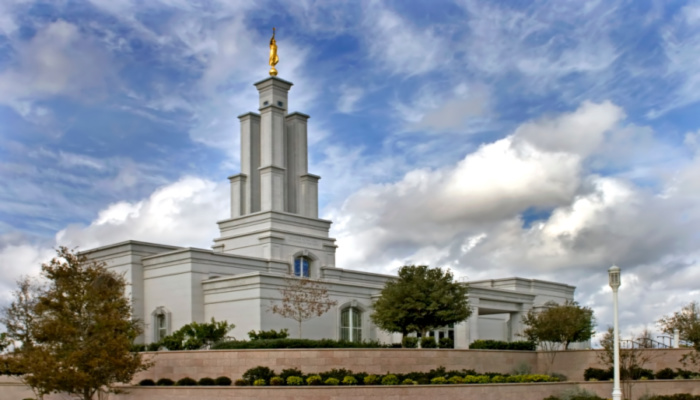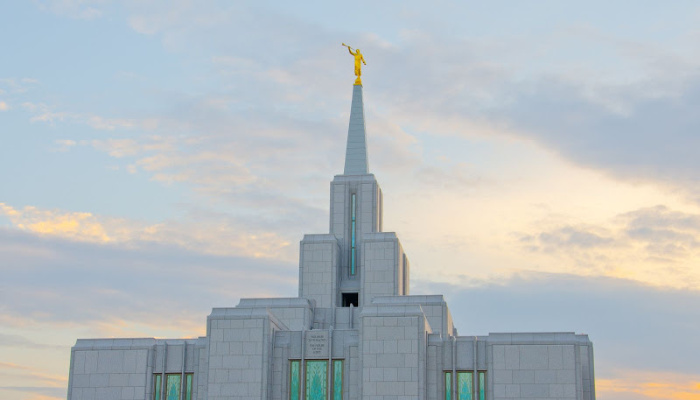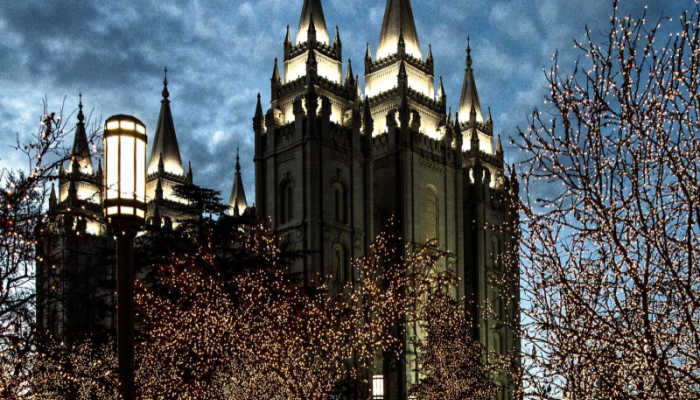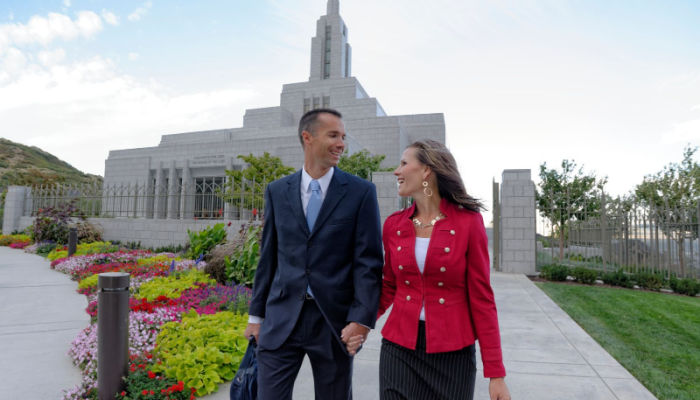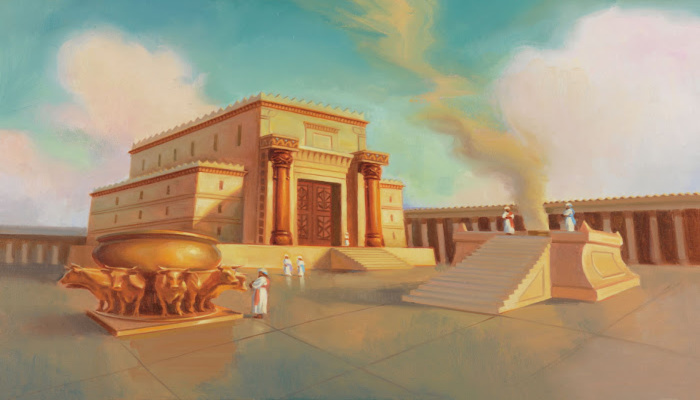
10 Ancient Connections to Modern Day Temples
There are several similarities between the ancient temples and the modern temples we know today.
1. The temple is the house of the Lord where angels come to visit. Jacob saw in a dream angels ascending and descending to earth from a ladder with the Lord Himself at the top. He appropriately named that place “Beth-el” and stated it should be “God’s house.” Solomon’s temple likewise was filled with God’s glory at the dedication. Today’s temples are visibly labeled “The House of the LORD,” and latter-day history is littered with accounts of angelic visitation and divine manifestations, with the Kirtland temple entertaining such notables as Elijah, Elias, Moses, and Jesus Christ.
2. The temple is a model of the universe. Josephus describes the Tabernacle as a microcosm of creation: the 3 major divisions represent sea, earth, and heaven; the candlestick branched into lights representing the planets; the colors used in the veil denote the various elements; and so on. He may have been a bit free in his interpretation, but he was by no means alone. Modern temples are not always quite so detailed, but a number of them retain the moon, sun, and stars symbols from the Nauvoo temple (and the woman of Revelation). The Salt Lake City temple not only has moonstones but displays them going through phases from new to full to new again.
3. The temple is a place of gathering. Ancient Israelites gathered around the Tabernacle. Once the temple was built in Jerusalem, they would gather there 3 times a year for the feasts of Tabernacles, Pentecost, and Passover. Shortly after the latter-day restoration of the gospel, temple sites were designated for each of the major stakes (Kirtland, Far West, Adam-ondi-Ahman, and the central Independence temple complex). President Hinckley and his successors have moved Latter-day Saints in that direction with an explosion of temples across the world.
4. The temple is a house of prayer. King Solomon dedicated the temple with a prayer. Priests and Levites recited hymns and prayers within its walls. Exiled in Babylon, Daniel physically turned towards the temple to pray. The Kirtland temple was dedicated as a “house of prayer,” and modern temples are so synonymous with prayer that Latter-day Saints can request prayers for loved ones via the Member Tools app. Prayers are said on their behalf within the temple. Anciently an altar of incense burned in the temple in front of the veil as a symbol of the “prayers of the saints.”
5. The temple is holy. The sites of ancient Israelite and modern Latter-day Saint temples are viewed as holy, with access restricted to certain individuals who are expected to have “clean hands and a pure heart” (Psalm 24:3-4). Ancient Israelites were given a Law of Holiness that included dress standards and dietary restrictions. This was to remind them to “be holy; for I [the Lord your God] am holy.” Modern saints are also given a dietary code to set us apart from others. Further, the sentiment “Holiness to the LORD” is not intended to remain over the temple doors but should serve as something of a daily affirmation for living saints.
 6. The temple orients us in God’s plan. Like the tabernacle and temple in ancient Israel, many Latter-day Saint temples are directionally oriented, with the ceremonial main entrance (indicated by the inscription “HOLINESS TO THE LORD” on modern temples) facing east (the word “orient” means “east”). Ancient Israelite temples were divided into three sections, each representing a progressively higher stage, reaching from the netherworld to heaven; similar symbolism can be recognized in the Latter-day Saint temples as well, instructing saints on their covenant relationship to God.
6. The temple orients us in God’s plan. Like the tabernacle and temple in ancient Israel, many Latter-day Saint temples are directionally oriented, with the ceremonial main entrance (indicated by the inscription “HOLINESS TO THE LORD” on modern temples) facing east (the word “orient” means “east”). Ancient Israelite temples were divided into three sections, each representing a progressively higher stage, reaching from the netherworld to heaven; similar symbolism can be recognized in the Latter-day Saint temples as well, instructing saints on their covenant relationship to God.
 7. The temple is a place of sacrifice. Animal sacrifices were done in the ancient temples. While the killing of animals isn’t done in Latter-day Saint temples, we are taught about the first animal sacrifices, done by Adam, and pointing toward Christ’s sacrifice. We also learn that the eternal principle of sacrifice has now shifted to one of a broken heart and a contrite spirit. (See Psalm 51:16-17.) God’s people covenant in modern temples to live the laws of sacrifice and consecration.
7. The temple is a place of sacrifice. Animal sacrifices were done in the ancient temples. While the killing of animals isn’t done in Latter-day Saint temples, we are taught about the first animal sacrifices, done by Adam, and pointing toward Christ’s sacrifice. We also learn that the eternal principle of sacrifice has now shifted to one of a broken heart and a contrite spirit. (See Psalm 51:16-17.) God’s people covenant in modern temples to live the laws of sacrifice and consecration.
8. The temple is a place of consecration. Inside the temples of the ancient Near East, kings, temple priests, and worshippers received a washing and anointing and were clothed, enthroned, and symbolically initiated into the presence of deity. Similar rituals occur in Latter-day Saint temples: washing and anointing, wearing special temple clothing, and symbolically entering the presence of God.
 9. The temple is filled with priesthood power. Ancient temples dealt with Aaronic Priesthood ordinances under the Law of Moses. Priests were organized and consecrated from among Aaron’s descendants. The tribe of Levi received no land when the Israelites arrived in the Holy Land from Egypt but were set apart for temple service. Sacrifices were performed, incense burned, and liturgies performed under this Aaronic order. Modern temples deal with ordinances related to the higher priesthood. In them, we see initiatories, endowments, sealings, and ordinances performed on behalf of the dead.
9. The temple is filled with priesthood power. Ancient temples dealt with Aaronic Priesthood ordinances under the Law of Moses. Priests were organized and consecrated from among Aaron’s descendants. The tribe of Levi received no land when the Israelites arrived in the Holy Land from Egypt but were set apart for temple service. Sacrifices were performed, incense burned, and liturgies performed under this Aaronic order. Modern temples deal with ordinances related to the higher priesthood. In them, we see initiatories, endowments, sealings, and ordinances performed on behalf of the dead.
10. The temple testifies of Christ. As already noted, ancient sacrifices were done as “a similitude of the sacrifice” of Jesus Christ. Additionally, the high priest who served in the temple was also intended to serve as a symbol of Christ the “great high priest.” Israel gathered at the temple to commemorate Jehovah’s leading them from Egypt (Passover) and to give gratitude for the great harvests He gave. In all this, they were reminded of the Lord’s generosity towards them and that they were His covenant people. Saints today go to the temple to covenant with the Lord. They are reminded that Jesus Christ created this earth, has restored His ancient covenants, and sends them out endowed with His power.
In The Church of Jesus Christ of Latter-day Saints, there are significant similarities between old and modern temples. Both involve sacred space, holiness, ordinances, and priesthood. These similarities demonstrate the restoration of God’s covenants, placed in a modern but timeless context.


